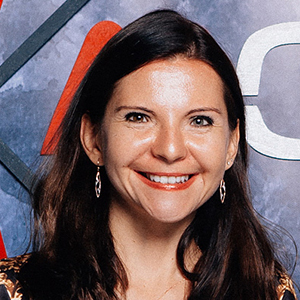By 2025, the global augmented and virtual reality market is predicted to reach $814.7 billion, in no small part due to the rapid commercial adoption. For marketers and retailers, this booming, increasingly accessible technology with numerous applications can be especially attractive. The current environment of tight competition and strong overall push for omnichannel strategies with a mobile-first and customer-centric focus is the perfect ground for AR testing.
The potential of augmented reality for retailers is yet to be fully realized. Specifically, the AR market in the sector today is mostly represented by one-off, single-task apps. Adding value and enhancing customer experience by design, many of them still often fall into ‘experimental’ and ‘gimmicky’ categories.
There is, however, a steady trend of fully integrated, strategy-defining AR retail applications on the rise. Some of the most notable examples follow.
Virtual try-ons
One of the psychologically perceived drawbacks of online shopping is the lack of sensory experience to fully assess a product. In the fashion industry, this is particularly prevalent, since body size and shape, skin tone, personal preferences, and the need to see a thing ‘on’ can make or break the purchase.
Amazon’s AR-enabled fitting rooms, Zara’s ‘complete-look’ in-store 3D models, and ASOS’s virtual catwalks can help either compensate for or bridge that sensory gap. Also, such solutions can enhance on-site experience by saving time and shortening physical fitting room lines. As a result, this can drive customer satisfaction and engagement, bringing up sales and reducing returns.
Virtual catalogs and shopper guides
Having an online storefront and a mobile catalog app is a must. However, adding AR can be a great opportunity to engage buyers through mobile even more.
Originated almost a decade ago, the idea of virtually bringing furniture items from a catalog to your living room is nothing new. Want to see how that comfy green chair or a vase you liked would fit into your environment? A simple idea that obviously works for customers—and large store chains like IKEA, Macy’s, and others have long caught on. As a result, AR-enhanced furniture catalog apps have become perhaps the most established, long-standing, and standardized of the retail AR bunch.
Another approach is to connect traditional paper catalogs or in-store items to an m-commerce app with marker-based AR. Companies like Mothercare, Moosejaw and others enrich customers’ experiences with quick-purchase options, useful product information, instructional videos, and other interactive functions made possible by a tech-driven blend of AR and traditional print.
In-store navigation
AR-enabled in-store navigation and product search is another way of combining online, mobile, and on-site user experiences. With huge home improvement stores, shopping malls, and sprawling physical markets, having an on-hand mobile guide to the user’s surroundings with the map of aisles, shelves, and product positions can be a most welcome addition.
In the case of Home Depot, their mobile app can be used to point the phone camera to an item and scan it for information, ratings, reviews, instructions, related items, their availability, and so on.
With such systems onboard, there are fewer assistants required to point shoppers around on the spot. This can free qualified staff’s time and attention that can be spent more productively otherwise.
Augmented shopping windows
Adding to billboards and other physical advertising, AR-enabled shopping windows are now a thing, too. Augmented shopping windows aim to be mostly memorable attention magnets. Used by the likes of Hugo Boss, Net-a-Porter, and ASUS, they effectively bring in more customers to stores and showrooms, engage and entertain passers-by, and dynamically advertise special offers.
Less impactful towards direct conversions, they nonetheless cultivate recognition, communicate positive brand image, and can even go viral, serving as a significant extra advertisement.
Visual analysis and recommendations
In combination with other technologies of today, AR can very well be the embodiment of digital transformation, mobile-first approach, and hyper-personalization for large make-up retailers.
International make-up vendors like L’Oréal, Sally Hansen, and Sephora bet on a slew of newly invented, AI- and AR-based interactive touchpoints to attract and retain customers. Virtual make-up application, automated skin-tone analyzers and recommendations for in-store products, ‘augmented mirror’ apps and video chats with consultants all add to buyers’ satisfaction and successfully foster positive, lasting, and profitable relationships with them.
AR for back-end processes
In retail, it’s all about customers, sure, but it’s not only about this side of things. AR has plenty of potential in warehouse operations and logistics optimization, as well.
One of the examples of augmented environment-sensitive application for retailers and shipping companies is warehouse navigation, order assessment, and packaging optimization for employees.
Another case could be made for staff training. Education in general is one of the leading spheres in extended reality adoption, so the potential for AR-use in employee training programs can only be expected to become more prominent in the future.
The bottom line
Gartner’s Hype Cycle might tell us that AR’s hype peak days are mostly over, but as a relatively new tech that’s ‘in’ it’s yet to become truly widespread. To justify spending, investors are particularly looking into reliability, security, ease of adoption, dependence on other technologies, and consumers’ readiness. However, as AR products continue to improve, the technology becomes more accessible for both enterprises and their users.
Marketing and retail sectors are just among the first to react to that. The rapid development, new and readily available ecommerce integration tools, and businesses’ growing understanding of intended audiences all signal that AR is here to stay. From individual tools and flashy standalone products, AR keeps evolving into a true fixture in the omnichannel customer journey.
Kate Prohorchik is Technology Observer for Iflexion

